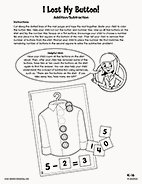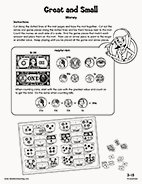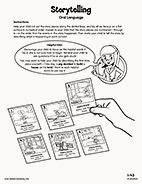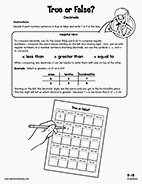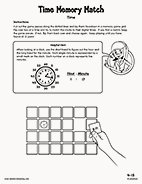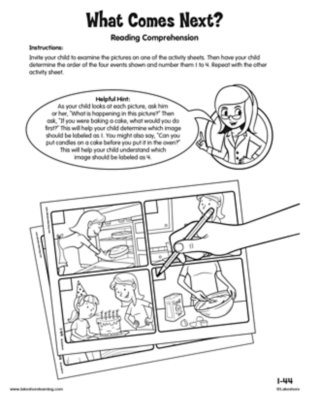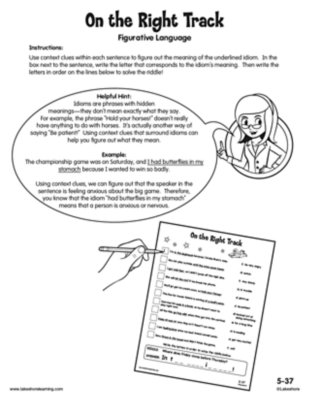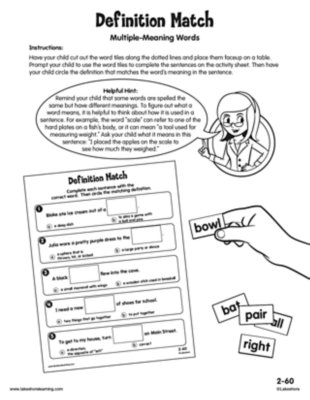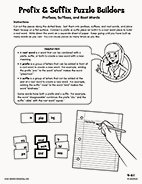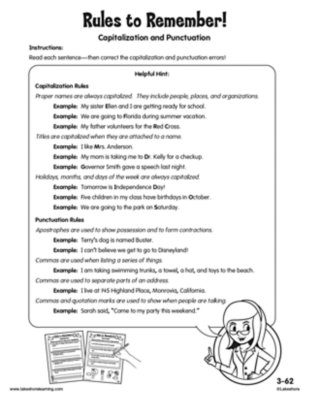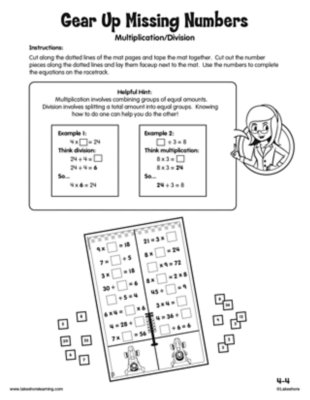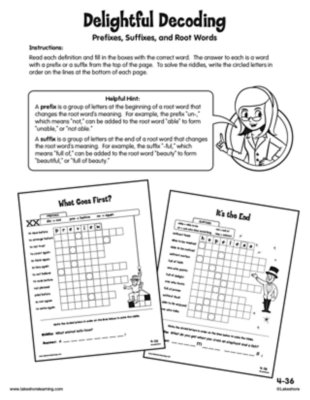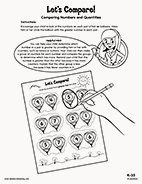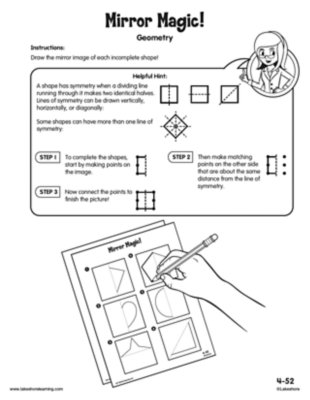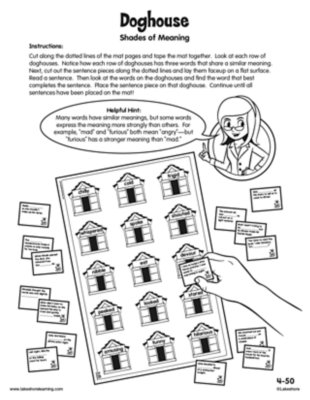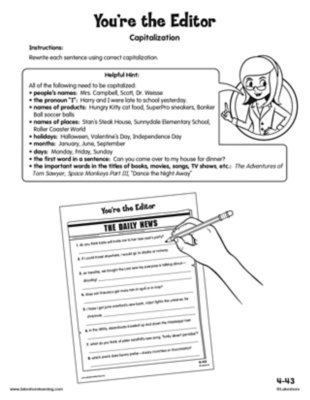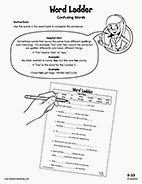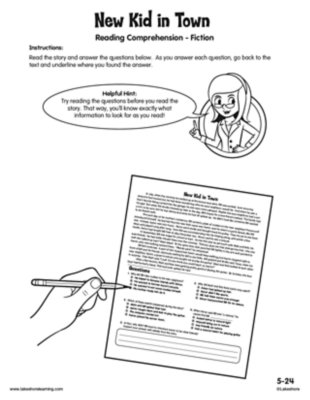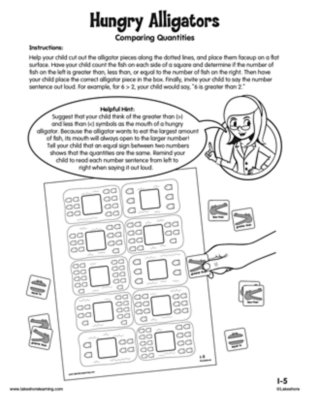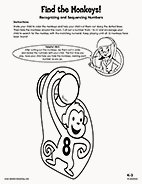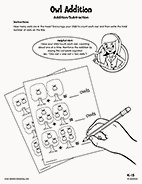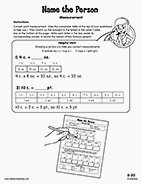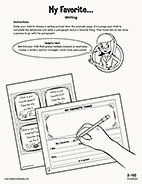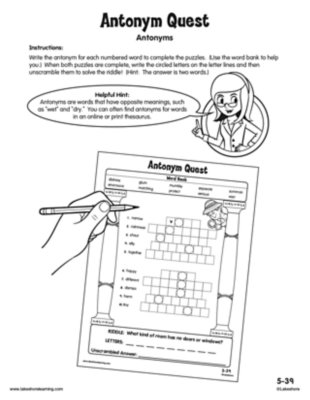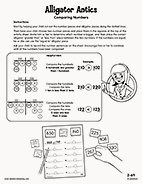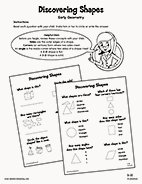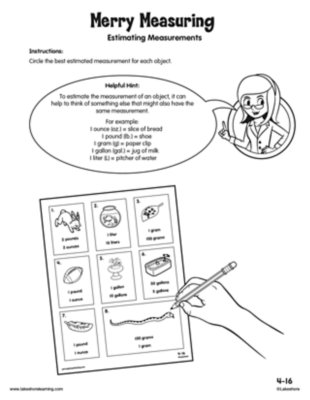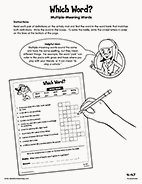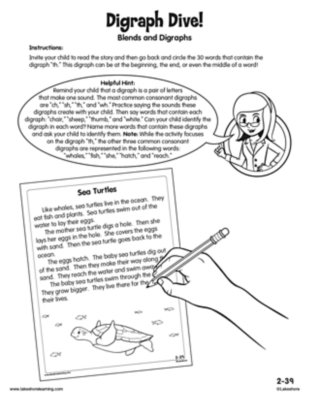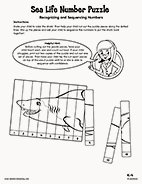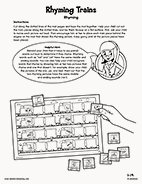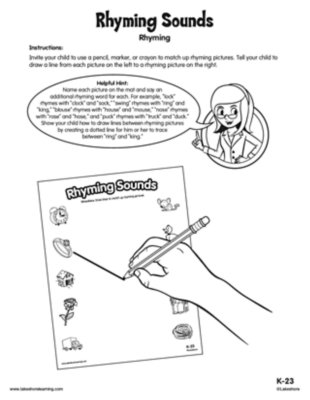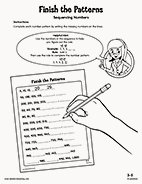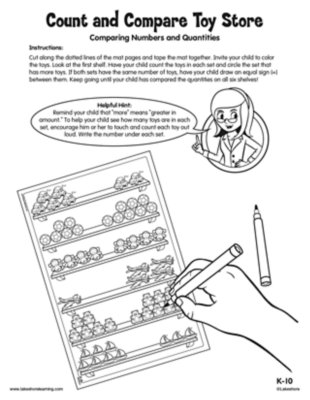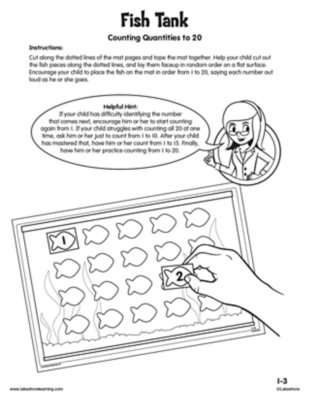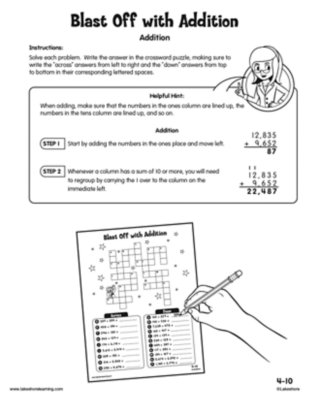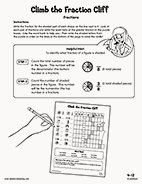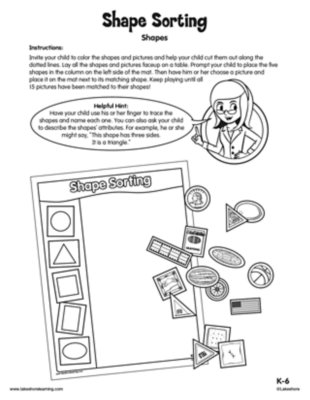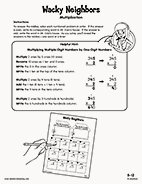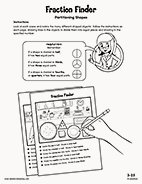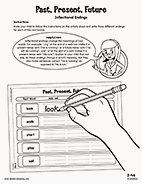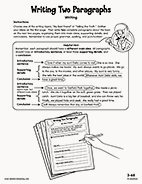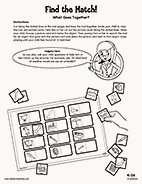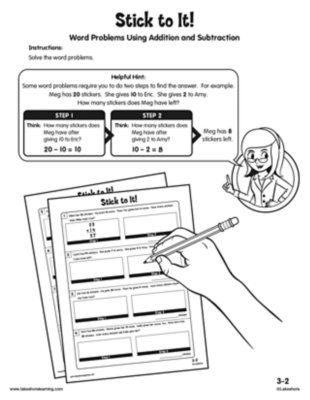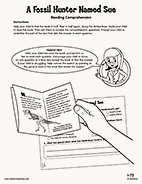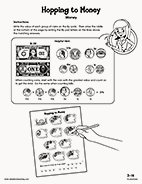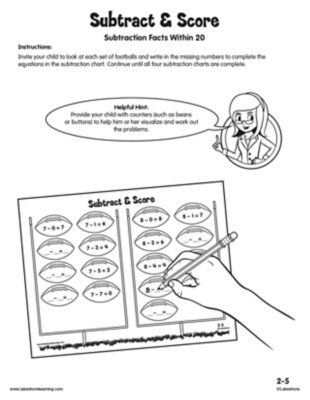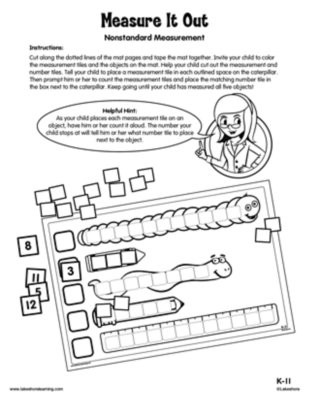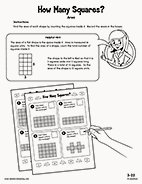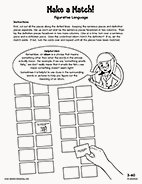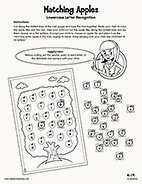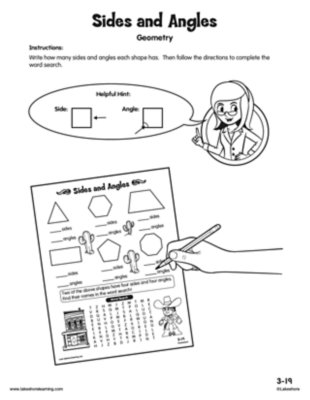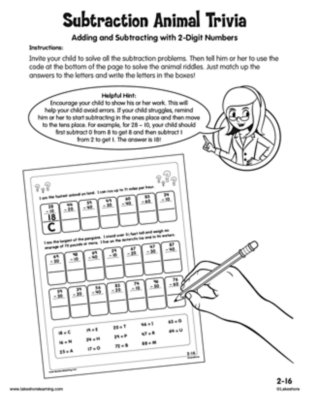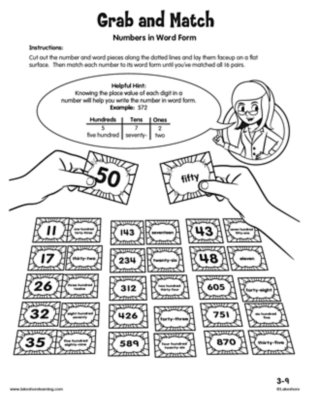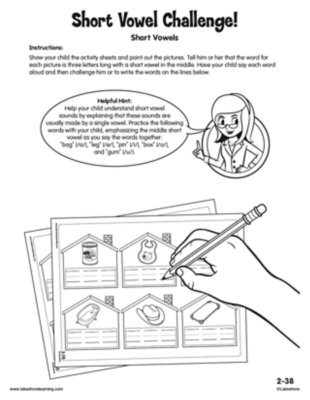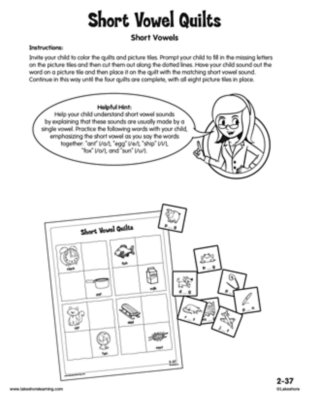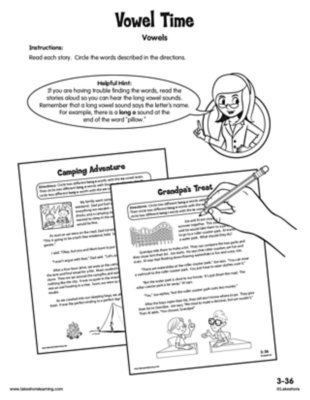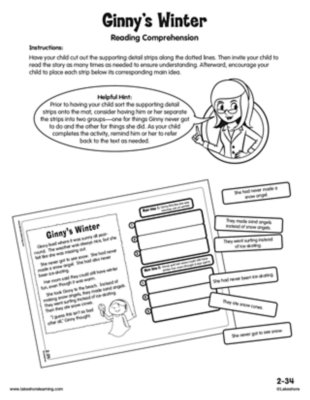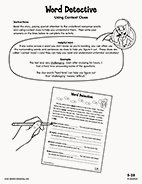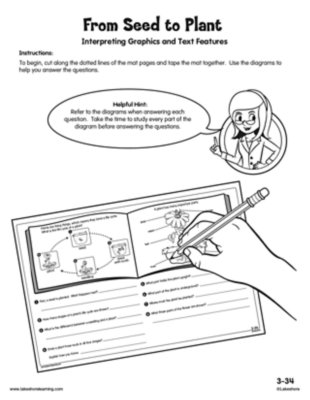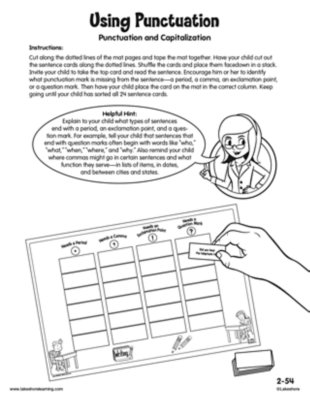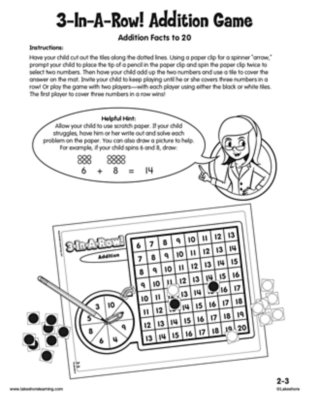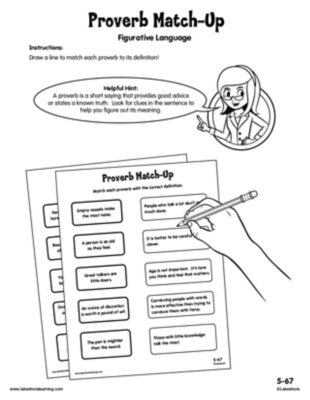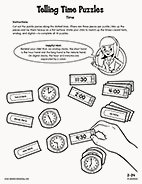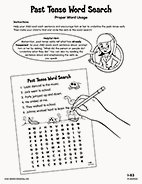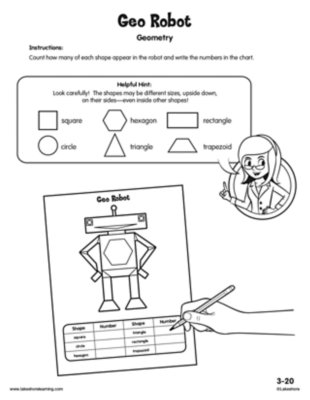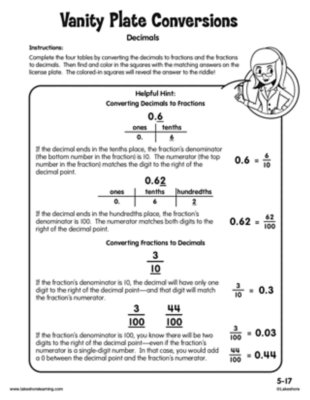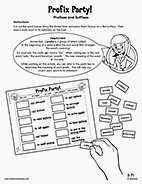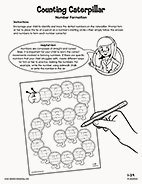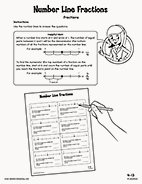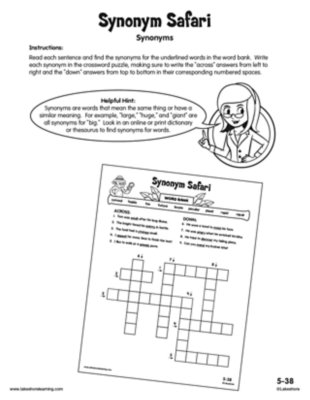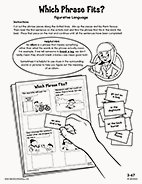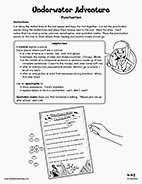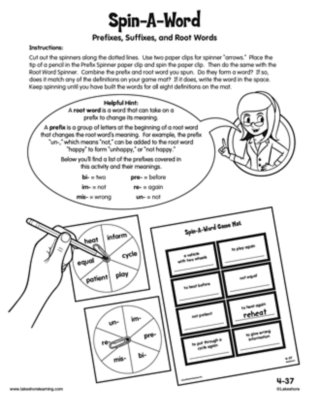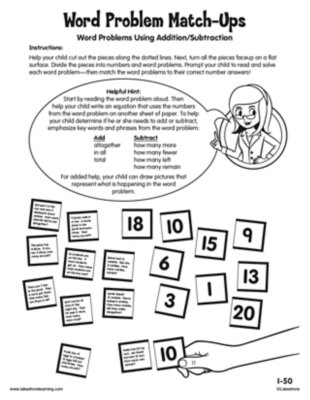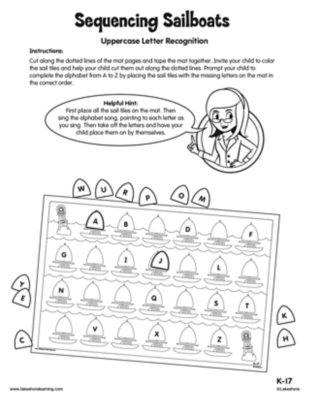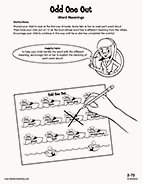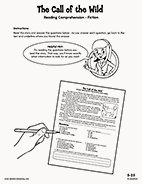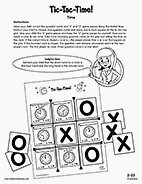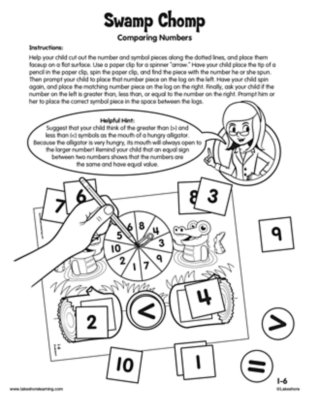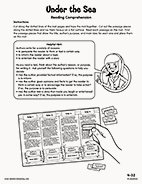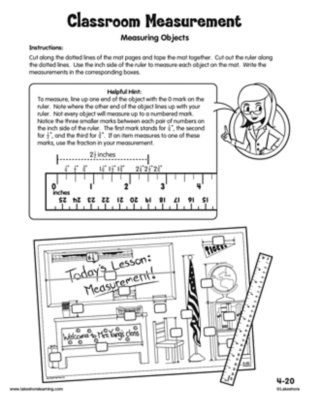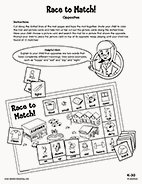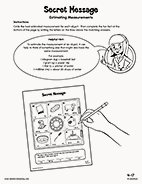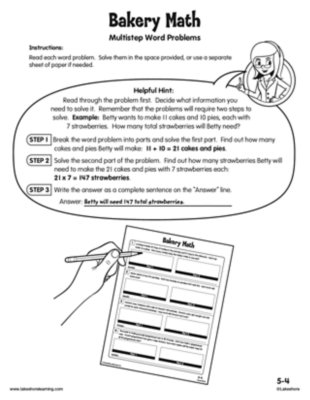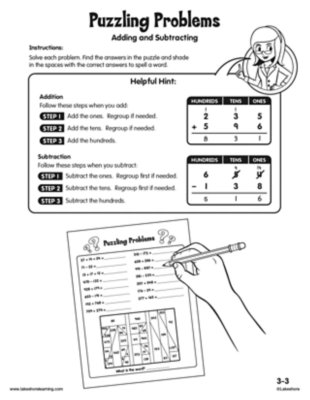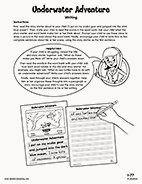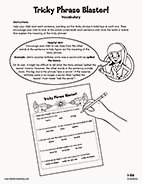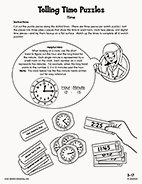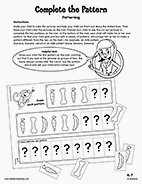Narrow by Grade
Grade
0 results for "art" , here are results for "are"
When entering third grade, your child should be able to mentally add 10 or 100 to any given number from 100 to 900 without having to write down the problems and work them out. For example, 156 + 10 = 166 and 234 + 100 = 334.
View worksheetWhen entering kindergarten, your child should be able to perform simple addition and subtraction using objects or their fingers. For example, “If we have 3 apples and add 2 more, how many apples do we have altogether?”
View worksheetWhen entering third grade, your child should be able to solve word problems that involve money, including dollar bills, quarters, dimes, nickels and pennies.
View worksheetWhen entering first grade, your child should be able to describe familiar people, places, things and events and express their thoughts, feelings and ideas clearly.
View worksheetWhen entering fifth grade, your child should be able to compare decimals to the hundredths place, such as 0.45 and 0.07. Your child should also be able to write fractions with denominators of 10 or 100 as decimals, such as writing 3/10 as 0.3 and writing 34/100 as 0.34.
View worksheetWhen entering fourth grade, your child should know how to tell and write time to the nearest minute. Your child should also be able to solve problems in which time has elapsed. For example, “The movie started at 5:15 p.m. It was 1 hour and 20 minutes long. What time did the movie end?”
View worksheetWhen entering first grade, your child should be able to listen to a story and answer questions about key details, such as identifying characters and events and retelling the story in their own words. Your child should also be able to identify parts of a book—such as the front cover, back cover and title page—as well as the role of authors and illustrators.
View worksheetWhen entering fourth grade, your child should be able to use clues within a sentence to figure out the meaning of an unfamiliar word or phrase. For example, in the following sentence, the underlined portion provides a clue to what the word “aviary” means: The zoo’s aviary was filled with owls, bluebirds, parrots, parakeets and cuckoos.
View worksheetWhen entering fifth grade, your child should be able to figure out the meaning of figurative language, including similes, metaphors and idioms.
View worksheetWhen entering second grade, your child should be able to figure out the correct meanings of multiple-meaning words, such as knowing when the word “bat” refers to a baseball bat or a flying animal.
View worksheetDuring fourth grade, your child will learn to use common, grade-appropriate Greek and Latin prefixes, suffixes and roots to figure out the meaning of a word. For example, “telegraph,” “photograph” and “autograph” all contain the Greek root “graph,” which refers to something that is written or drawn.
View worksheetDuring third grade, your child will learn to capitalize the appropriate words in titles, such as the names of books and movies. Your child will also be expected to use commas in written addresses and with quotation marks to show when someone is speaking.
View worksheetWhen entering fourth grade, your child should be able to quickly and easily solve multiplication and division facts within 100 without having to count. For example, 9 x 9 = 81 and 56 ÷ 8 = 7.
View worksheetWhen entering fourth grade, your child should be able to figure out the meaning of a word when a prefix or suffix is added to a familiar root word, such as figuring out what the word “unhappy” means based on the knowledge that “un-” means “not.”
View worksheetDuring kindergarten, your child will learn to compare two numbers, determining if one is greater than, less than or equal to the other.
View worksheetDuring fourth grade, your child will learn to identify lines and angles, understand symmetry and classify shapes based on their lines and angles. For example, your child will be able to classify right triangles by seeing that they have a 90-degree angle.
View worksheetWhen entering fourth grade, your child should be able to distinguish between shades of meaning among related words, such as “wondered,” “suspected,” “believed” and “knew.”
View worksheetWhen entering fourth grade, your child should remember to capitalize the appropriate words in titles, such as the names of books and movies. Your child should also remember to use commas in written addresses and with quotation marks to show when someone is speaking.
View worksheetWhen entering fifth grade, your child should be able to correctly use frequently confused words, such as “to” and “two” or “there” and “their.”
View worksheetWhen entering fifth grade, your child should be able to read, analyze and understand level-appropriate stories, dramas and poems—exploring key events and details, analyzing characters, examining point of view and making inferences.
View worksheetWhen entering first grade, your child should be able to determine if a number or group of objects is greater than, less than or equal to another.
View worksheetWhen entering kindergarten, your child should be able to recognize numbers 1 to 20 and count them in sequence.
View worksheetWhen entering kindergarten, your child should be able to perform simple addition and subtraction using objects or their fingers. For example, “If we have 3 apples and add 2 more, how many apples do we have altogether?”
View worksheetWhen entering fifth grade, your child should be able to solve problems involving measurement and conversion of measurement.
View worksheetWhen entering second grade, your child should be able to figure out the correct meanings of multiple-meaning words, such as knowing when the word “bat” refers to a baseball bat or a flying animal.
View worksheetWhen entering second grade, your child should be able to write short opinion pieces, informative texts and narratives (stories).
View worksheetWhen entering fifth grade, your child should be able to understand words by relating them to their opposites (antonyms) and to words with similar but not identical meanings (synonyms).
View worksheetDuring second grade, your child will learn to determine if a three-digit number is greater than, less than or equal to another three-digit number and use the >, < and = symbols to show the answer.
View worksheetWhen entering kindergarten, your child should be able to compare objects and describe their similarities and differences, including distinguishing by color, size, weight or shape. Your child should also be able to describe objects using the correct words, such as “big,” “small,” “short” and “tall.”
View worksheetWhen entering first grade, your child should be able to identify 2-D (flat) and 3-D (solid) shapes, find shapes in the real world and compare shapes based on their number of sides or corners.
View worksheetWhen entering fourth grade, your child should be able to estimate liquid volumes and masses of objects using grams, kilograms and liters.
View worksheetWhen entering fourth grade, your child should be able to figure out the correct meanings of multiple-meaning words that appear in third-grade texts, such as knowing when the word “shower” refers to a rainstorm or a place to wash off.
View worksheetWhen entering second grade, your child should be able to read and spell words with consonant blends, such as “st,” “sp” and “bl,” as well as common consonant digraphs, such as “th,” “ch” and “sh.”
View worksheetWhen entering kindergarten, your child should be able to recognize numbers 1 to 20 and count them in sequence.
View worksheetWhen entering first grade, your child should be able to recognize and create rhyming sounds.
View worksheetWhen entering kindergarten, your child should be able to recognize and match words that rhyme.
View worksheetWhen entering third grade, your child should be able to count and sequence numbers within 1,000 and skip-count by 5s, 10s and 100s.
View worksheetWhen entering kindergarten, your child should be able to count groups of up to 10 objects and determine if one group of objects is more than, less than or equal to the other.
View worksheetWhen entering first grade, your child should be able to count as many as 20 objects at a time.
View worksheetWhen entering fourth grade, your child should be able to easily add and subtract within 1,000.
View worksheetWhen entering fourth grade, your child should understand fractions as numbers and be able to represent fractions on a number line, compare fractions and identify equivalent fractions.
View worksheetWhen entering kindergarten, your child should be able to identify simple shapes—such as squares, circles, triangles and rectangles—and describe objects in the real world using shape names.
View worksheetWhen entering fifth grade, your child should be able to multiply a number with up to four digits by a one-digit number and a two-digit number by another two-digit number. Your child should also be able to divide numbers with up to four digits by a one-digit number, including problems with remainders.
View worksheetWhen entering third grade, your child should be able to divide circles and rectangles into halves, thirds and fourths and describe the parts of each using terms like “halves,” “thirds,” “half of” and “a third of.”
View worksheetWhen entering second grade, your child should be able to read words with inflectional endings and use them correctly in sentences. Inflectional endings are letters that are added to words, such as “-ing,” “-es,” or “-ed.” For example, your child should be able to read the words “wishing,” “wishes” and “wished” and use them correctly in sentences.
View worksheetDuring third grade, your child will learn to write opinion pieces that are supported with reasons, informative texts that convey ideas and information clearly, and narratives (stories) that include descriptive details and a clear sequence of events.
View worksheetWhen entering kindergarten, your child should be able to group common objects into categories and identify reasons for grouping the objects. For example, if given a lamp, sofa and zebra, your child should be able to group the lamp and sofa together because they are household items, while the zebra is not.
View worksheetWhen entering third grade, your child should be able to solve one-step and two-step word problems involving addition and subtraction within 100.
View worksheetDuring first grade, your child will answer questions about key details in stories, such as identifying characters, settings and events, identifying who is telling the story and retelling the story in their own words. Your child will also learn to tell the difference between books that tell stories and books that provide information.
View worksheetWhen entering third grade, your child should be able to solve word problems that involve money, including dollar bills, quarters, dimes, nickels and pennies.
View worksheetWhen entering second grade, your child should be able to subtract within 20 fluently. For example, 18 — 5 = 13 and 20 — 6 = 14.
View worksheetWhen entering kindergarten, your child should be able to identify how long something is by measuring it with like objects instead of a ruler. This is called nonstandard units of measurement. For example, “The dolphin is nine fish long.”
View worksheetWhen entering third grade, your child should be able to divide a rectangle into rows and columns of same-size squares and count to find the total number of them.
View worksheetDuring third grade, your child will learn to understand figurative language, such as idioms, and distinguish between the literal and nonliteral meanings of words. For example, “It was a piece of cake!”
View worksheetWhen entering kindergarten, your child should be able to recognize and name some lowercase letters, especially those in your child’s name.
View worksheetWhen entering third grade, your child should be able to recognize and draw shapes with specific attributes, such as six angles or three sides. Your child should also be able to identify triangles, quadrilaterals, pentagons, hexagons and cubes.
View worksheetWhen entering second grade, your child should be able to add and subtract using a two-digit number and a one-digit number, as well as a two-digit number and another two-digit number. For example, 22 + 20 = 42 and 41 — 10 = 31.
View worksheetWhen entering third grade, your child should be able to read and write numbers within 1,000 using numerals and number words.
View worksheetWhen entering third grade, your child should be able to solve problems using information from line plots, picture graphs and bar graphs.
View worksheetWhen entering second grade, your child should be able to distinguish short vowels from long vowels in spoken one-syllable words, such as hearing the short “a” sound in “cap.”
View worksheetWhen entering second grade, your child should be able to distinguish short vowels from long vowels in spoken one-syllable words, such as hearing the short “a” sound in “cap.”
View worksheetWhen entering third grade, your child should be able to distinguish long and short vowels when reading regularly spelled one-syllable words, such as “mad” and “made,” and know how to spell words using common vowel teams, such as “ai,” “ea,” “ee,” “oa” and “oi.”
View worksheetWhen entering second grade, your child should be able to recall and identify key events, facts and details in grade-appropriate fiction and nonfiction texts.
View worksheetWhen entering fifth grade, your child should be able to figure out the meaning of an unfamiliar word or phrase by using clues in the text, such as definitions or examples.
View worksheetWhen entering third grade, your child should be able to use text features—including diagrams, bold print, glossaries and indexes—to locate facts in informational texts, such as newspapers, magazines or science books.
View worksheetWhen entering second grade, your child should remember to capitalize dates and people’s names. Your child will also be expected to use punctuation at the ends of sentences. Your child should also use commas in dates and to separate words in a series. For example, “I like apples, bananas, and strawberries.”
View worksheetWhen entering second grade, your child should be able to add to 20 fluently. For example, 5 + 9 = 14 and 13 + 7 = 20.
View worksheetDuring fifth grade, your child will learn to interpret examples of figurative language, including similes and metaphors, based on the context in which they are used. Your child will also learn to recognize and explain the meaning of common idioms and familiar sayings and expressions, such as, “A bird in the hand is worth two in the bush.”
View worksheetWhen entering second grade, your child should be able to tell and write time in hours and half-hours using clock faces and digital clocks.
View worksheetDuring first grade, your child will learn subtleties in words’ meanings and make real-life connections between words and their use, such as understanding that both a bed and sofa could be called cozy.
View worksheetWhen entering third grade, your child should be able to recognize and draw shapes with specific attributes, such as six angles or three sides. Your child should also be able to identify triangles, quadrilaterals, pentagons, hexagons and cubes.
View worksheetWhen entering fifth grade, your child should be able to compare decimals to the hundredths place, such as 0.45 and 0.07. Your child should also be able to write fractions with denominators of 10 or 100 as decimals, such as writing 3/10 as 0.3 and writing 34/100 as 0.34.
View worksheetDuring third grade, your child will learn to figure out the meaning of a new word when a prefix or suffix is added to a familiar word, such as figuring out the meaning of “preheat” based on the knowledge that “pre-” means “before.”
View worksheetWhen entering first grade, your child should be able to print many uppercase and lowercase letters and write numbers 0 through 20.
View worksheetWhen entering fourth grade, your child should understand fractions as numbers and be able to represent fractions on a number line, compare fractions and identify equivalent fractions.
View worksheetWhen entering fifth grade, your child should be able to understand words by relating them to their opposites (antonyms) and to words with similar but not identical meanings (synonyms).
View worksheetDuring third grade, your child will learn to understand figurative language, such as idioms, and distinguish between the literal and nonliteral meanings of words. For example, “It was a piece of cake!”
View worksheetWhen entering fourth grade, your child should remember to capitalize the appropriate words in titles, such as the names of books and movies. Your child should also remember to use commas in written addresses and with quotation marks to show when someone is speaking.
View worksheetWhen entering fourth grade, your child should be able to figure out the meaning of a word when a prefix or suffix is added to a familiar root word, such as figuring out what the word “unhappy” means based on the knowledge that “un-” means “not.”
View worksheetDuring first grade, your child will be asked to solve word problems that involve adding and subtracting within 20.
View worksheetWhen entering kindergarten, your child should be able to recognize and name some uppercase letters, especially those in your child’s name.
View worksheetDuring second grade, your child will learn to determine the meanings of grade-appropriate words based on the context in which they are used.
View worksheetWhen entering fifth grade, your child should be able to read, analyze and understand level-appropriate stories, dramas and poems—exploring key events and details, analyzing characters, examining point of view and making inferences.
View worksheetWhen entering second grade, your child should be able to tell and write time in hours and half-hours using clock faces and digital clocks.
View worksheetWhen entering first grade, your child should be able to determine if a number or group of objects is greater than, less than or equal to another.
View worksheetWhen entering fourth grade, your child should be able to read and analyze level-appropriate stories, dramas, poems and informational texts, identifying elements such as main ideas, key details and the author’s purpose.
View worksheetWhen entering fourth grade, your child should be able to measure the lengths of objects using rulers marked with halves and fourths of an inch.
View worksheetWhen entering second grade, your child should be able to add to 20 fluently. For example, 5 + 9 = 14 and 13 + 7 = 20.
View worksheetWhen entering kindergarten, your child should be able to understand the most common opposites, such as “happy/sad” and “stop/go.”
View worksheetWhen entering fourth grade, your child should be able to estimate liquid volumes and masses of objects using grams, kilograms and liters.
View worksheetWhen entering fifth grade, your child should be able to solve multistep word problems using addition, subtraction, multiplication and division, including problems with remainders.
View worksheetWhen entering third grade, your child should be able to add and subtract two 3-digit numbers (327 + 216 or 452 — 318), add multiple 2-digit numbers (22 + 14 + 36 + 61) and find the missing number in equations (14 + __ = 19).
View worksheetDuring first grade, your child will be asked to write opinion pieces, informative texts and narratives (stories).
View worksheetDuring first grade, your child will learn to figure out the meanings of new words and multiple-meaning words based on the context in which they are used.
View worksheetWhen entering third grade, your child should be able to tell and write time from clock faces and digital clocks to the nearest five minutes. For example, 8:05 a.m. or 2:15 p.m.
View worksheetWhen entering kindergarten, your child should be able to copy simple patterns, such as ABAB, and determine what comes next in the pattern.
View worksheet
